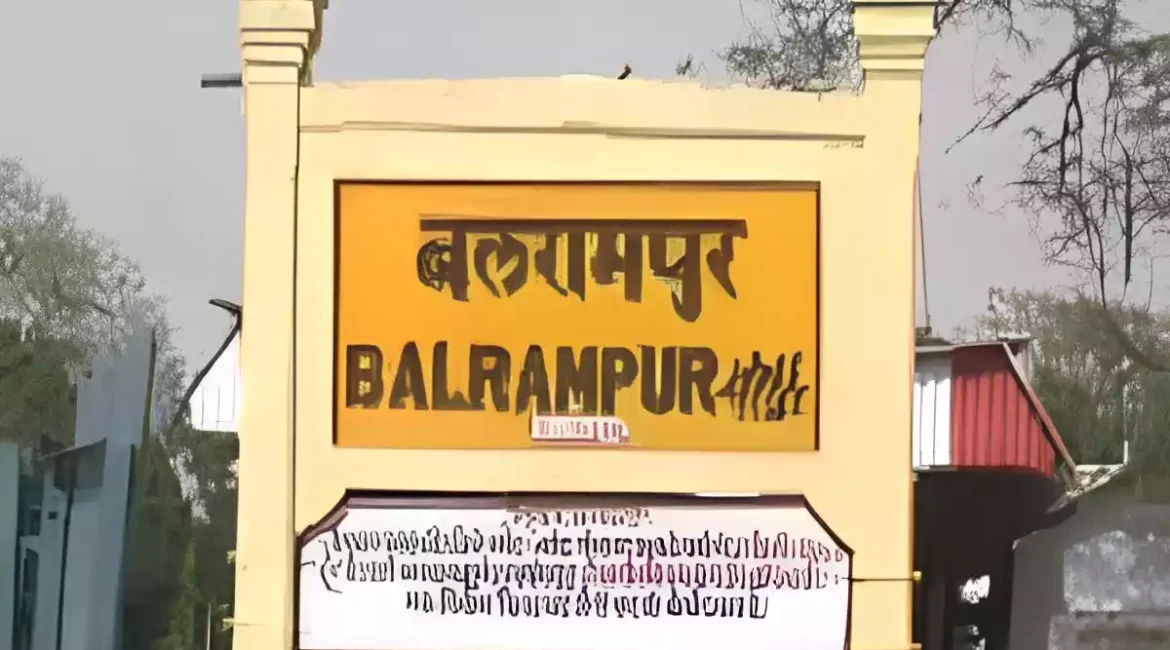Discovering Balrampur: A Comprehensive Guide
Balrampur is a district rich in history, culture, and natural beauty, located in the northeastern part of the Indian state of Uttar Pradesh. This article provides an in-depth exploration of Balrampur, covering its demographics, culture, geography, cuisines, history, notable poets/authors, and administrative details.
Demographics of Balrampur
Population and Composition
Balrampur boasts a diverse population with a harmonious blend of various communities. According to the latest census, the district has a population of approximately 2.3 million people. The majority of the population consists of Hindus, followed by Muslims, with a small percentage of other religions such as Sikhs, Christians, and Jains.
Language
The primary language spoken in Balrampur is Hindi, with Awadhi being the regional dialect. Urdu is also widely spoken, particularly among the Muslim community. English is used for official and educational purposes.
Cultural Heritage of Balrampur
Festivals
Balrampur's cultural landscape is vibrant, with numerous festivals celebrated throughout the year. Major Hindu festivals like Diwali, Holi, and Dussehra are celebrated with great fervor. Eid-ul-Fitr and Eid-ul-Adha are significant festivals for the Muslim community. Other local festivals include Makar Sankranti, Chhath Puja, and Teej.
Traditional Attire
Traditional clothing in Balrampur reflects its cultural diversity. Men typically wear dhotis or kurta-pajamas, while women adorn sarees or salwar kameez. On special occasions, intricate and colorful garments are worn, showcasing the region's rich textile heritage.
Geographical Features
Location and Climate
Balrampur is situated at the foothills of the Himalayas, bordered by Nepal to the north. The district experiences a subtropical climate, with hot summers, a monsoon season, and mild winters. The average temperature ranges from 25°C to 40°C in summer and 10°C to 20°C in winter.
Natural Attractions
The district is blessed with natural beauty, including the serene Rapti River and lush green landscapes. Balrampur is also home to the Katarniaghat Wildlife Sanctuary, which is part of the Dudhwa Tiger Reserve and offers a habitat for diverse flora and fauna.
Culinary Delights of Balrampur
Traditional Cuisine
Balrampur's cuisine is a delightful blend of Awadhi and Mughlai influences. Some of the must-try dishes include:
- Kebabs: Tender and flavorful, often served with mint chutney.
- Biryani: A fragrant rice dish cooked with spices, meat, and sometimes vegetables.
- Puri and Sabzi: A popular breakfast combination of deep-fried bread and spiced vegetables.
Sweets and Desserts
Sweets play a significant role in Balrampur's culinary traditions. Popular desserts include:
- Gulab Jamun: Deep-fried dough balls soaked in sugar syrup.
- Jalebi: Spiral-shaped, crispy sweets dipped in sugar syrup.
- Kheer: A creamy rice pudding flavored with cardamom and garnished with nuts.
Historical Significance
Ancient History
Balrampur's history dates back to ancient times, with significant references in Hindu mythology and scriptures. The region was part of the Kosala kingdom and is associated with Lord Buddha, who is said to have visited the area during his travels.
Colonial Era
During the British colonial period, Balrampur emerged as an important administrative and commercial center. The district played a role in the Indian independence movement, with local leaders participating in various freedom struggles.
Post-Independence
After India gained independence in 1947, Balrampur continued to grow and develop. It became a separate district in 1997, carved out from the Gonda district, and has since seen infrastructural improvements and economic progress.
Notable Poets and Authors
Acharya Ram Chandra Shukla
One of the most prominent literary figures from Balrampur is Acharya Ram Chandra Shukla, a renowned Hindi critic, poet, and historian. His contributions to Hindi literature and his role in the literary renaissance of the early 20th century are widely celebrated.
Other Literary Figures
Balrampur has also been home to various other poets and authors who have made significant contributions to regional and national literature, enriching the cultural tapestry of the district.
Administrative Structure
Governance
Balrampur district is administratively divided into several tehsils and blocks, each managed by respective local government officials. The district headquarters is located in the town of Balrampur.
Infrastructure
The district has seen considerable development in infrastructure, including roadways, healthcare facilities, and educational institutions. Key projects have been initiated to improve connectivity and public services.
Suggested Diagram
Here is a mermaid diagram illustrating the administrative structure of Balrampur district:
Conclusion
Balrampur is a district that beautifully intertwines its historical significance with cultural richness and natural beauty. From its diverse population and vibrant festivals to its delicious cuisine and scenic landscapes, Balrampur offers a unique glimpse into the heart of Uttar Pradesh. Understanding the district's comprehensive profile provides a deeper appreciation of its role in India's cultural and historical mosaic.
